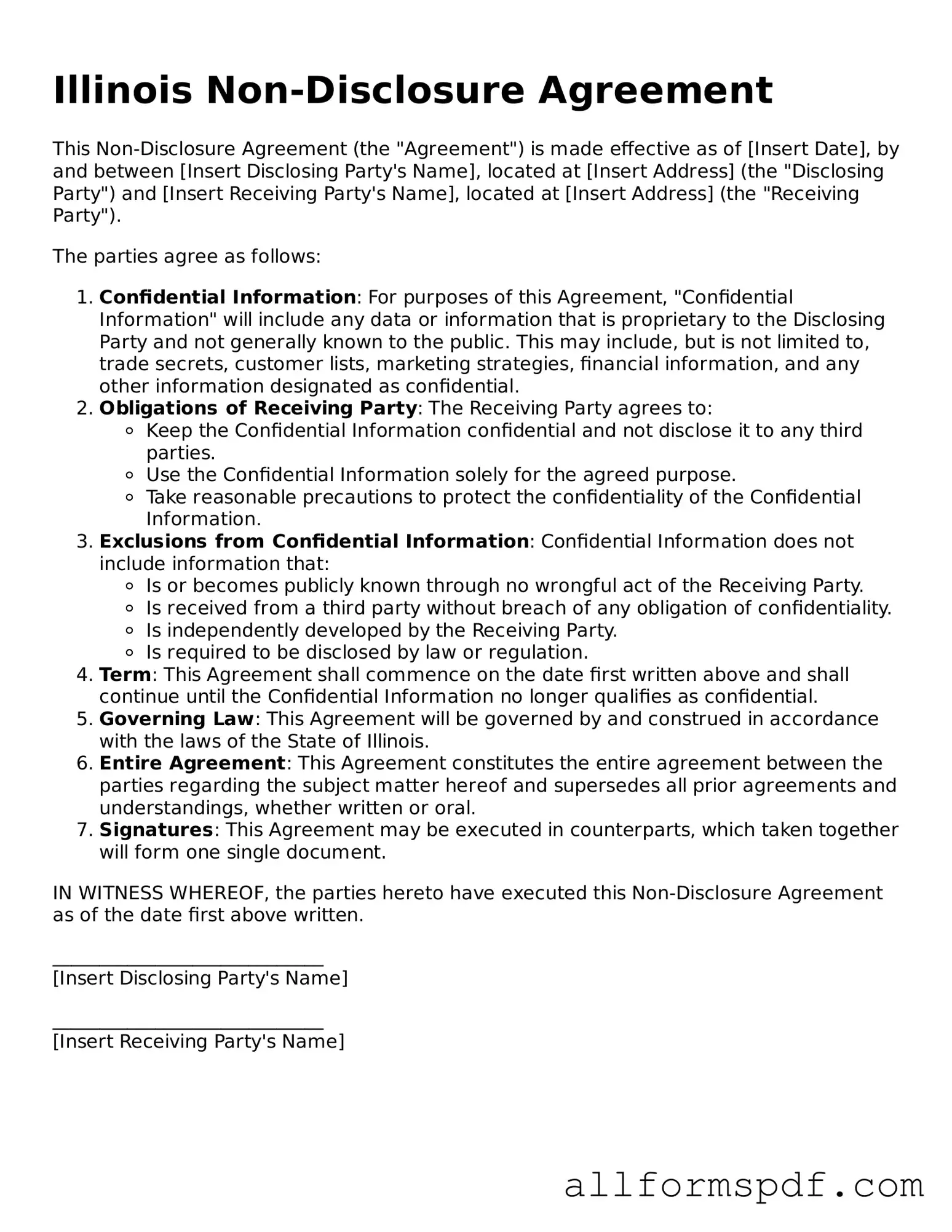Filling out the Illinois Non-disclosure Agreement (NDA) form can be a straightforward process, but several common mistakes can lead to complications. Understanding these pitfalls is essential to ensure that the agreement serves its intended purpose effectively.
One common mistake is failing to clearly define what constitutes "confidential information." Without a precise definition, it can lead to misunderstandings about what information is protected. Parties may assume different things, which can result in disputes later on. Take the time to specify the types of information that are considered confidential, such as trade secrets, business plans, or customer lists.
Another frequent error involves not including the effective date of the agreement. This date is crucial as it marks when the obligations under the NDA begin. Without it, there may be confusion regarding the timeline of confidentiality obligations. Always ensure that the effective date is clearly stated to avoid any ambiguity.
Many individuals overlook the importance of specifying the duration of confidentiality obligations. An NDA should indicate how long the information must remain confidential. If this period is not defined, the agreement may lack enforceability. It is wise to consider the nature of the information and the industry standards when determining this duration.
People often neglect to include the signatures of all parties involved. An NDA is not valid unless it is signed by both parties. Missing signatures can render the agreement unenforceable, leaving sensitive information unprotected. Always double-check that all necessary signatures are present before finalizing the document.
Additionally, some individuals fail to consult legal counsel before signing the NDA. This oversight can lead to unintentional acceptance of unfavorable terms. Seeking professional advice ensures that the agreement is fair and that all rights and obligations are understood. It is always better to be cautious than to face potential legal issues down the line.
Finally, many people do not keep a copy of the signed NDA. This is a critical mistake because having a record of the agreement can be vital if disputes arise in the future. Always make sure to store a copy in a safe place, so it can be referenced if needed.
